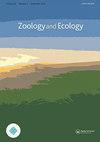Automated photogrammetric method to identify individual painted dogs (Lycaon pictus)
Q4 Environmental Science
引用次数: 1
Abstract
The painted dog, Lycaon pictus, has been visually identified by their tricolor patterns in surveys and whilst computerised recognition methods have been used in other species, they have not been used in painted dogs. This study compares results achieved from Hotspotter software against human recognition. Fifteen individual painted dogs in Yokohama Zoo, Japan were photographed using camera-traps and hand-held cameras from October 17–20, 2017. Twenty examinees identified 297 photos visually, and the same images were identified using Hotspotter. In the visual identification, mean accuracy rate was 61.20%, and a mean finish time was 4,840 seconds. At 90.57%, the accuracy rate for Hotspotter was significantly higher, with a mean finish time of 3,168 seconds. This highlights that visual photo-recognition may not be of value for untrained eyes, while software recognition can be useful for this species. For visual identification there was a significant difference in accuracy rates between hand-held cameras and camera-traps whereas for software identification there was no significant difference. This result shows that the accuracy of software identification may be unaffected by the type of photographic device. With software identification there was a significant difference with camera-trap height. This may be because the images of one camera-trap at a lower position became dark due to it being in a shadow.识别彩绘狗个体的自动摄影测量方法(Lycaon pictus)
在调查中,这种被称为Lycaon pictus的彩绘犬已经通过它们的三色图案被视觉识别出来,虽然计算机识别方法已经在其他物种中使用,但它们还没有被用于彩绘犬。这项研究将Hotspotter软件获得的结果与人类识别结果进行了比较。2017年10月17日至20日,日本横滨动物园用相机陷阱和手持相机拍摄了15只单独的彩绘狗。20名考生用视觉识别297张照片,用Hotspotter识别同样的照片。在视觉识别中,平均准确率为61.20%,平均完成时间为4840秒。Hotspotter的准确率高达90.57%,平均完成时间为3168秒。这突出表明,视觉照片识别可能对未经训练的眼睛没有价值,而软件识别可能对这个物种有用。对于视觉识别,手持相机和相机陷阱之间的准确率有显著差异,而对于软件识别,没有显著差异。这一结果表明,软件识别的准确性可能不受摄影设备类型的影响。通过软件识别,相机陷阱高度存在显著差异。这可能是因为位于较低位置的相机陷阱由于处于阴影中而使图像变暗。
本文章由计算机程序翻译,如有差异,请以英文原文为准。
求助全文
约1分钟内获得全文
求助全文
来源期刊

Zoology and Ecology
Agricultural and Biological Sciences-Animal Science and Zoology
CiteScore
1.00
自引率
0.00%
发文量
1
 求助内容:
求助内容: 应助结果提醒方式:
应助结果提醒方式:


